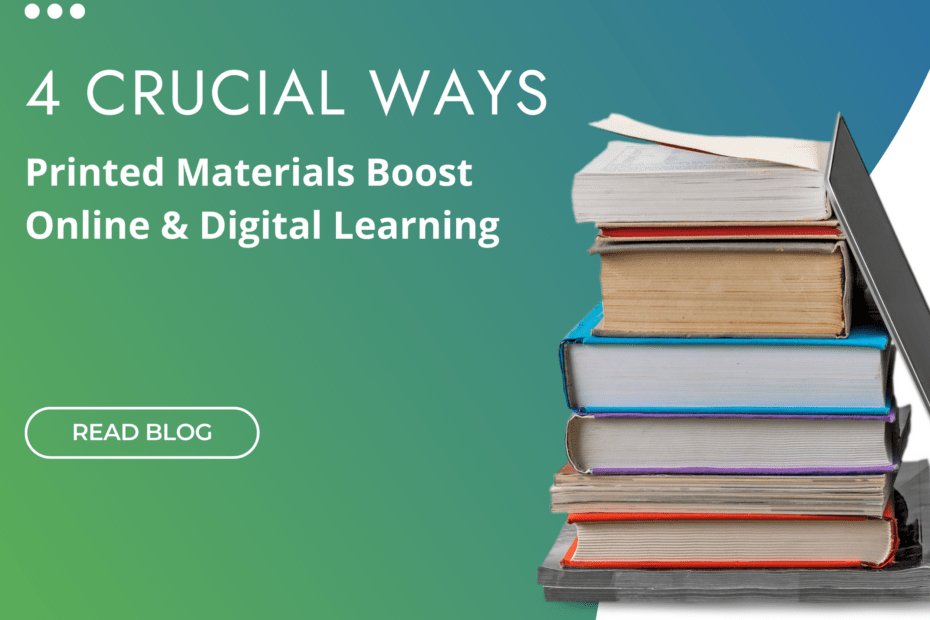As online learning continues to grow in popularity, it’s easy to overlook the benefits of traditional printed learning materials.
However, the truth is that print materials can be an incredibly valuable complement to online learning. Here’s how.
- Physical learning materials have been shown to boost memory retention
One of the most significant benefits of printed materials is that they provide a tangible and permanent resource that students can refer back to time and time again.
In recent years, institutions have begun conducting studies to measure the rate of memory retention in students who primarily use physical learning materials versus students who study on screens. 29 of the 33 laboratory studies found that readers learned more from text on paper.
Unlike digital materials, which can easily be lost or forgotten, printed materials can be easily accessed and used – no technology is required.
2. Printed materials allow for a different type of learning experience
When reading a physical textbook or workbook, students can highlight and take notes, which can help to reinforce key concepts and improve retention. In fact, research shows that the process of hand recording notes and data allows the brain to more accurately recall it at a later time!
The act of physically recording notes is not always possible with online materials, because they may not have the same level of interactivity.
3. Printed materials can be a great way to reduce screen time
Daily screen time has increased by 50 minutes a day since 2013, with the average American spending around 7 hours and 4 minutes on a digital device each day!
Quite simply, printed materials offer a way for readers and learners to give their eyes a break.
Additionally, printed materials, unlike digital devices, forgo the use of blue light. Blue light has been linked to disturbances in one’s circadian rhythm, insomnia, anxiety, eye strain, and macular degeneration, while physical materials have none of these side effects!
4. Printed materials can be a more inclusive learning option
For learners who may not have access to the latest technology (or who prefer a more traditional approach to learning), printed materials are always an excellent, accessible way to encourage ongoing learning and prevent barriers to education.
A recent Common Sense Media report found that between 9 and 12 million American children still lack access to wifi and internet in their homes.
By providing printed materials alongside digital ones, teachers can ensure that every single student has access to the resources they need to succeed!
Conclusion
Overall, while online learning certainly has its advantages, printed learning materials can be a valuable complement to this mode of learning.
They offer a different type of learning experience, provide a permanent resource for reference, reduce screen time, and can be a more inclusive option for learners.
Are you ready to bring high-quality learning materials to your classroom? Let JPS Book & Logistics help!


